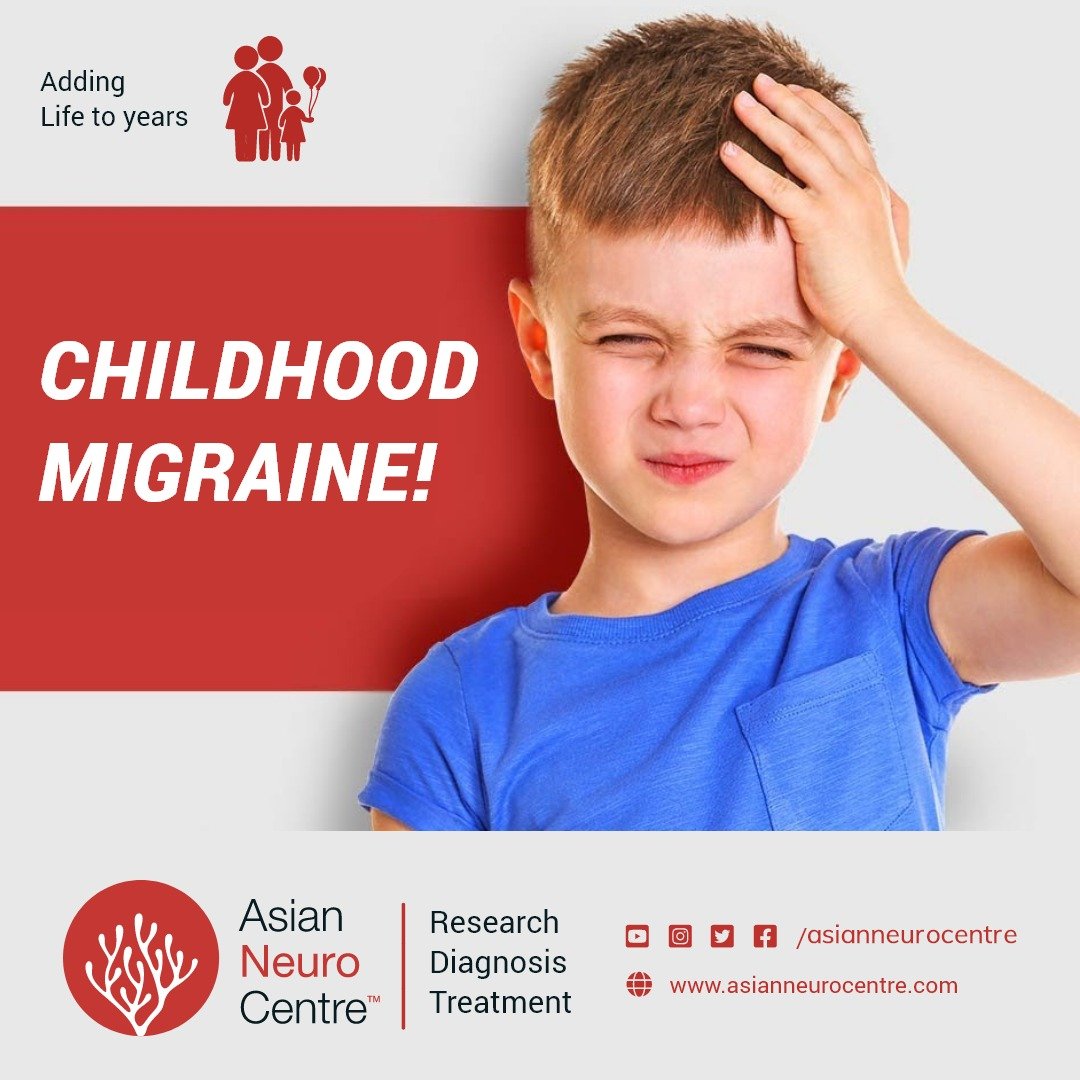- Have any questions?
- 911 12345 29
- info@asianneurocentre.com
Aids Affecting Nervous System – Childhood Migraine

Symptoms of Multiple Sclerosis
June 24, 2021
Who is Neuro Physician and how his job is different from Neurosurgeon
June 30, 2021Headaches in children are common and usually aren’t serious. Like adults, children can develop different types of headaches, including migraines or stress-related (tension) headaches. n some cases, headaches in children are caused by an infection, high levels of stress or anxiety, or minor head trauma. It’s important to pay attention to your child’s headache symptoms and consult a doctor if the headache worsens or occurs frequently.
Migraine is a common disorder in children. Estimates indicate that 3.5–5% of all children will experience recurrent headaches consistent with migraines. Management consists of identifying triggering factors, providing pain relief, and considering prophylaxis.
Symptoms
Children get the same types of headaches adults do, but their symptoms may be a little different. For example, migraine pain in adults often lasts at least four hours — but in children, the pain may be much less than that. These can include:
- a headache that lasts 2–72 hours Trusted Source
- a headache on one side of the head
- moderate to severe pain
- pain that gets worse with physical activity
- sensitivity to light or sound
- nausea or vomiting
- aura, sensory disturbances such as flashing lights in the field of vision that may be the first symptom
It can be difficult to diagnose migraine in young children, who may be unable to describe their symptoms. Another challenge involves the subjectivity of pain intensity — children and their parents or caregivers may have little or nothing to use for comparison. For these reasons, doctors rarely diagnose migraine in children under 2 years old. Finally, it is worth noting that for some people with migraine, a headache is absent or a minor symptom.

What causes migraine in children?
Researchers do not know why some children experience migraine while others do not. However, many children with migraine have family members with the condition, suggesting that there is a genetic component.
People with migraine often find that certain foods, situations, or environmental factors triggers migraine episodes. Identifying these triggers can often help prevent the episodes.
However, identifying the triggers can take time. It is also worth noting that several triggers often overlap to contribute to the development of a migraine episode.
It can help to keep a record of a child’s migraine symptoms and any possible causes. We give specific ideas about what to note down in the “Home care” section below.
Common triggers to consider include:
Changes in sleep patterns: A child may have an episode if they sleep too much or too little. It may help to establish and maintain a regular sleep schedule.
- Dehydration: Ensuring that a child drinks enough water, particularly after physical activity, may help reduce migraine symptoms.
- Foods and drinks: Specific foods may trigger symptoms and so may eating too little. Take note of what a child has eaten on days when they have symptoms and check for a pattern.
- Stress: Stress and overstimulation can contribute to migraine. If a child frequently feels stressed and anxious, they may benefit from having a quiet space where they can calm down. Mindfulness activities for children may also help.
